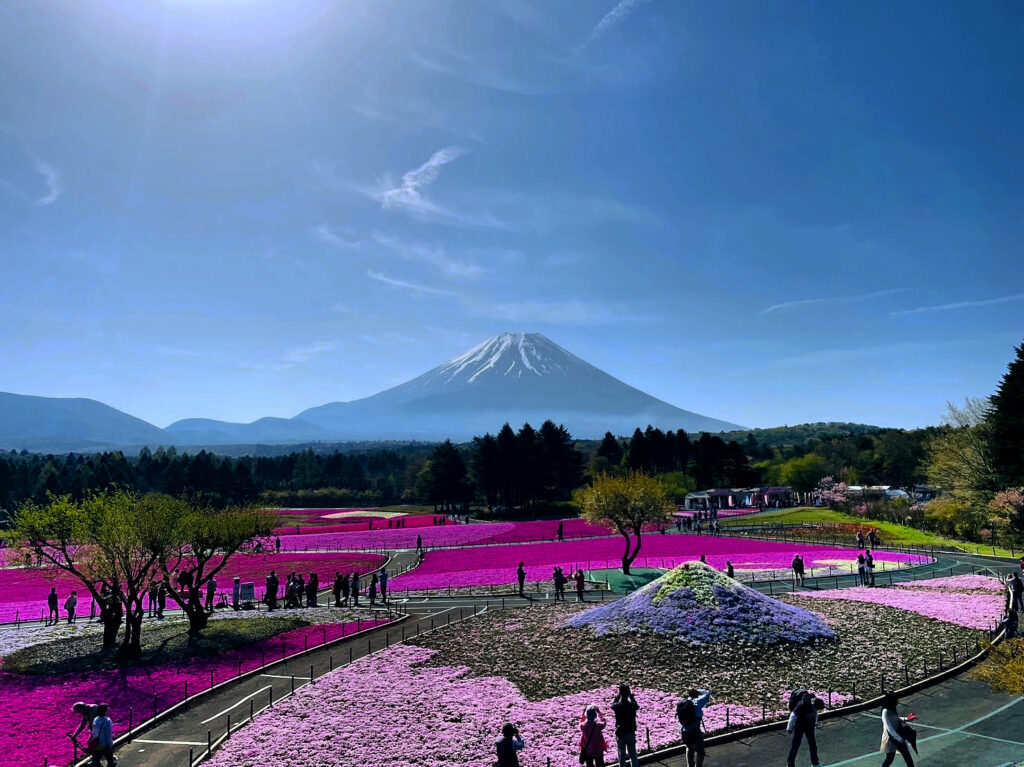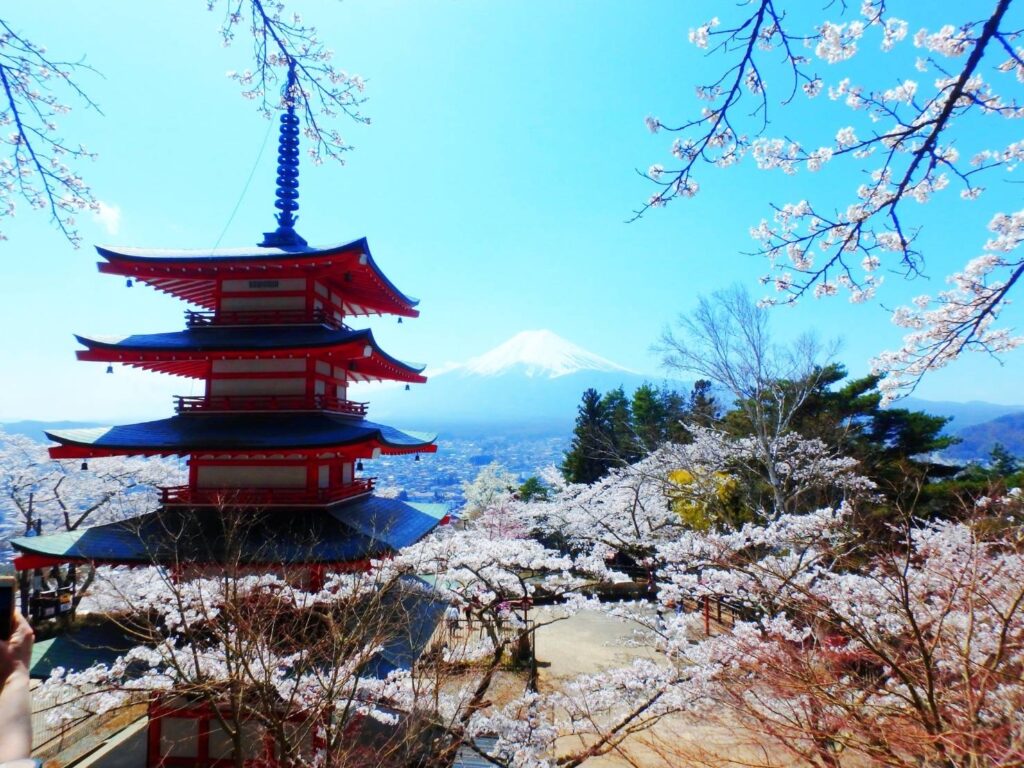Even though I live near Mt. Fuji, I still find new places that surprise me.
One weekend, I decided to explore something a little different — two small museums in Kawaguchiko that both focus on gemstones. I’ve passed by them before but never stopped in, thinking they were just simple tourist spots.
This time, I went inside — and it turned out to be way more fun and personal than I expected.
At the Stone Museum, I ended up playing a shooting game to win real gemstones (yes, seriously), and at the Yamanashi Gem Museum, I found a silver necklace that I couldn’t leave without.
It was one of those days where you realize how many little hidden gems — literally and figuratively — exist around Lake Kawaguchiko.
Quick Navigation
- 1 Discovering Unique Museums Around Lake Kawaguchiko
- 2 My Visit to “Stone Museum” – A Fun Gemstone Shooting Experience
- 3 Visiting the Yamanashi Gem Museum – From Viewing to Buying
- 4 A Different Side of Kawaguchiko’s Culture
- 5 Practical Tips for Travelers
- 6 Final Thoughts – Would I Recommend These Museums?
Discovering Unique Museums Around Lake Kawaguchiko
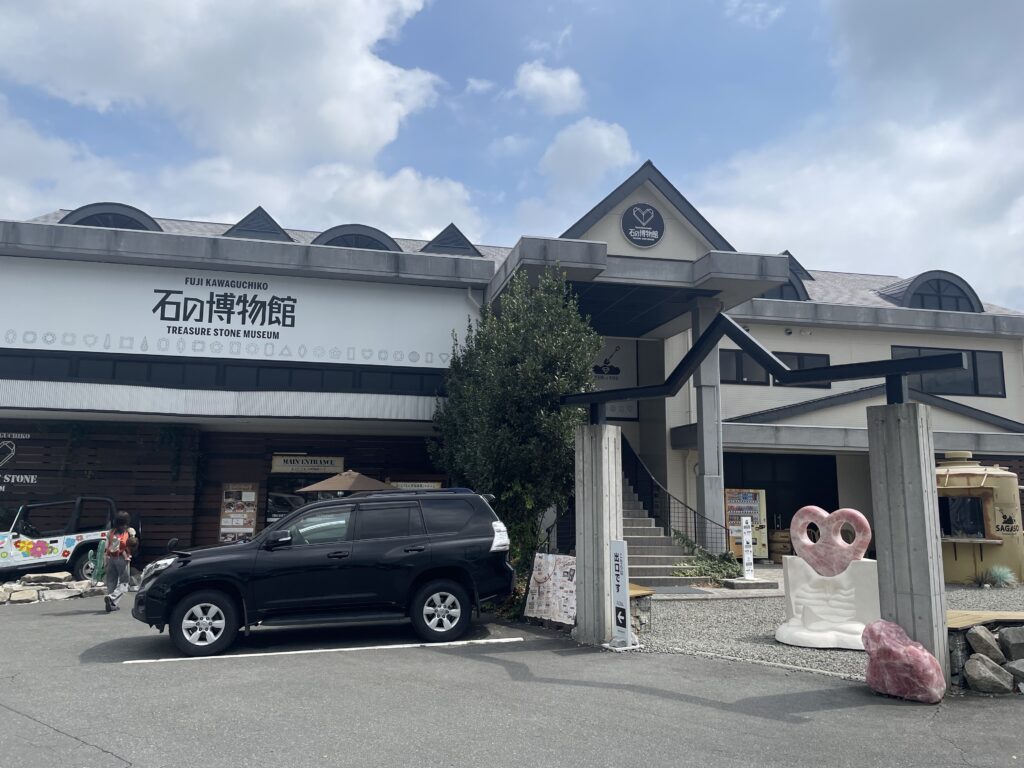
Why I Decided to Visit Gemstone Spots Near Mt. Fuji
I’ve driven past Lake Kawaguchiko more times than I can count, but I never really paid attention to the small museums scattered around the lake.
Most people visit for the famous Mt. Fuji views or cafés, but there’s another, quieter side to this area that most travelers miss.
A few weekends ago, I noticed two little museums standing not too far apart — one called the Stone Museum and the other the Yamanashi Gem Museum.
They looked simple from the outside, but I decided to check them out, curious about what kind of “gemstone world” might be hiding inside.
The best part? Both museums felt personal and low-key.
There were no big crowds or loud announcements — just a calm, slightly nostalgic atmosphere that reminded me why I love exploring local spots around Mt. Fuji.
The Local Vibe of Kawaguchiko’s Hidden Museums
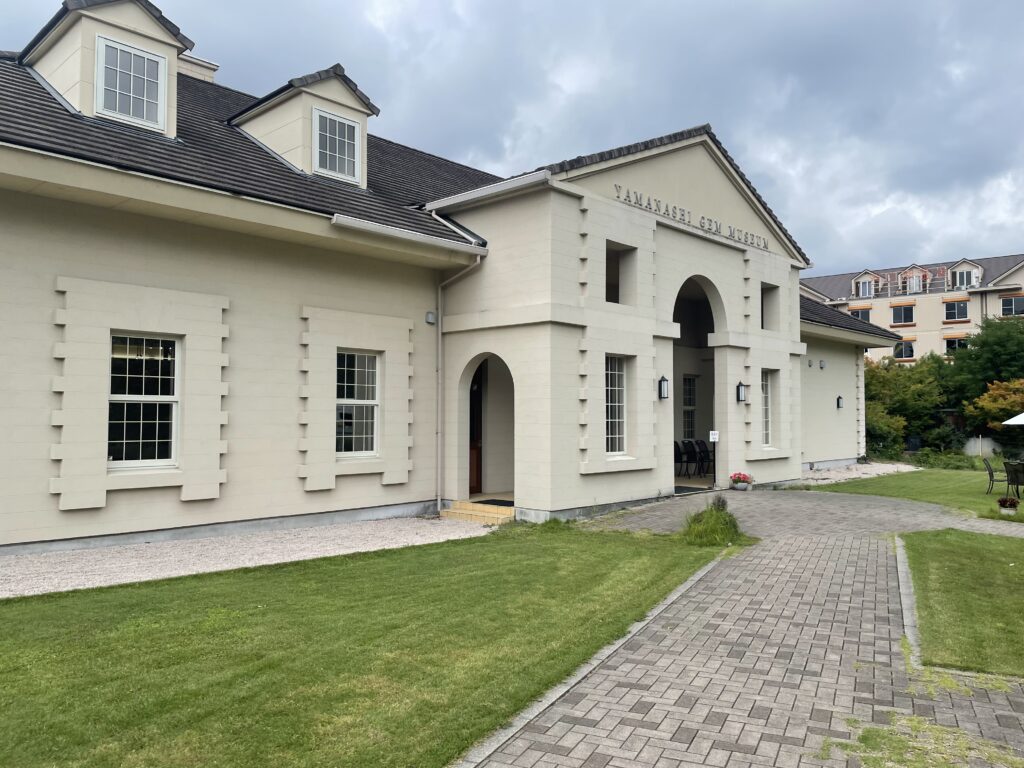
What I liked the most was how calm these places felt.
They’re nothing like the busy sightseeing spots around Lake Kawaguchiko — no crowds, no loud tour buses, no long lines.
Instead, you’ll find a quiet kind of charm, like time moves a little slower there.
Both museums sit just off the main road, surrounded by trees and local houses.
You can still hear the sounds of nature — birds, the wind, even the occasional car passing by — and it somehow makes the experience feel more genuine.
It reminded me that Kawaguchiko isn’t just about the big attractions or famous photo spots.
It’s also about these small, peaceful corners that show the real rhythm of life near Mt. Fuji.
My Visit to “Stone Museum” – A Fun Gemstone Shooting Experience

First Impressions and Atmosphere
Right from the entrance, the Stone Museum had this playful, almost amusement-park vibe — the kind of place that makes you feel curious the moment you walk in.
Outside, there was a sandpit area where kids and families were digging for gemstones as part of a small “stone-hunting” activity. It looked simple, but everyone seemed to be having a good time.
Inside, the atmosphere changed completely. The space was quiet but full of color — shelves lined with gemstones of every size and shade, from tiny polished pieces to large, rare crystals.
Some of them sparkled so beautifully that I couldn’t help but stop and look closer.
There were not only displays but also items for sale, each with a short explanation about where the stone came from and its meaning.
Reading about the history and properties of each gemstone was surprisingly fascinating — it felt both mysterious and educational, like discovering a hidden side of nature I’d never paid attention to before.
Trying the Shooting Game to Win Gemstones
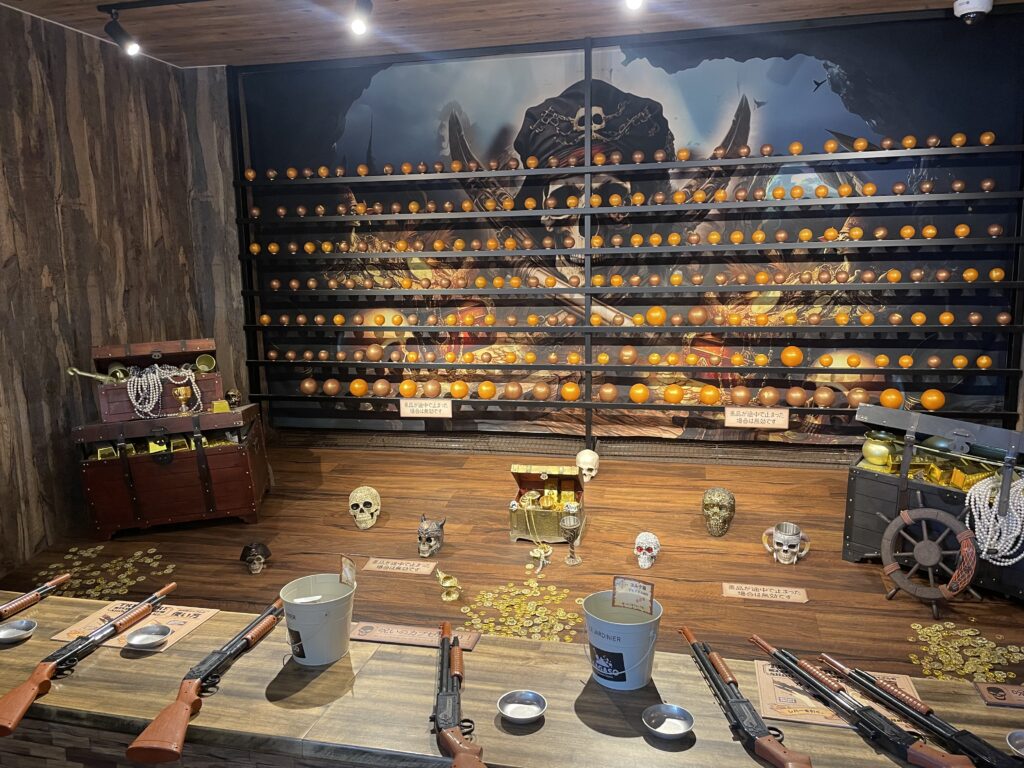
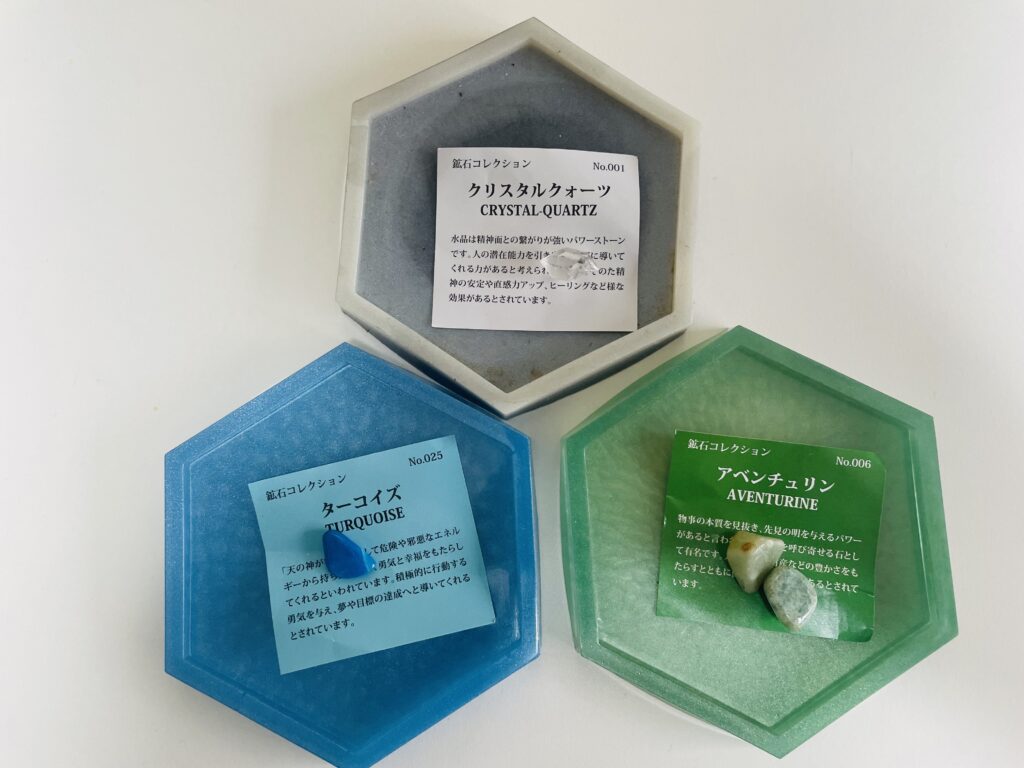
One of the highlights of the Stone Museum was a small shooting game — just ¥500 for ten shots. It looked simple at first, but it turned out to be surprisingly fun.
You use a toy gun to shoot at little capsule targets hanging in front of you. If you hit one and it drops, you win the prize inside. Each capsule contains a small gemstone, and the best part is that you don’t know what you’ll get until you open it.
It’s a mix of luck and skill, and honestly, it’s easy to see why both kids and adults were lining up to try it.
I gave it a shot for the first time and managed to hit three capsules — not bad for a beginner!
Inside, I found an Aventurine, a Turquoise, and a clear Crystal. Small stones, but somehow it felt much more rewarding than just buying them from a shelf.
What Makes This Museum Different from Others
What makes the Stone Museum stand out is that it’s not just about looking at displays — it’s about experiencing them.
Instead of simply buying gemstones, you actually get to play, discover, and take part in the process of finding them yourself.
The mix of small attractions and hands-on events gives the place a lighthearted, almost nostalgic feel.
It’s the kind of spot where both kids and adults can have fun, and where the gemstones you take home feel more like memories than souvenirs.
If you’re visiting Lake Kawaguchiko and want to enjoy something different from the usual sightseeing spots, this museum is definitely worth a stop.
Visiting the Yamanashi Gem Museum – From Viewing to Buying

Inside the Museum – Beautiful Stones and Displays
With an entrance fee of ¥600 for adults and ¥300 for children, the Yamanashi Gem Museum offers a calm, elegant space filled with gemstones and minerals from all over the world.
Some of them are incredibly rare — the kind you’d normally only see in books or on TV. Seeing them up close was honestly mesmerizing.
The museum isn’t a place for noisy groups or kids running around; it’s more for couples or adults who enjoy taking their time and quietly appreciating the beauty of each piece.
From delicate necklaces and earrings to large decorative stones that could fill a whole display case, everything was beautifully arranged and soothing to look at.
It’s one of those places where you don’t rush. You just walk slowly, admire the colors, and feel a kind of calm you can’t really find in the usual tourist spots.
Finding a Silver Necklace as a Souvenir
While looking around the displays, one thing immediately caught my eye — a simple silver necklace made with 925 sterling silver.
I’d actually been looking for something like that for a while, so the moment I saw it, I knew I wanted it. The price was only ¥2,300, which felt like a great deal for such a nice piece.
I decided to buy it right away, and I’ve been wearing it ever since.
It’s simple, but it somehow reminds me of that quiet afternoon at the museum — the light, the stones, and that calm atmosphere. It’s become one of my favorite pieces to wear, not just as an accessory but as a small memory from Lake Kawaguchiko.
Staff and English Support
The museum had English signs throughout the exhibits, and I even saw a few international visitors while I was there.
Most of the gemstone descriptions were written in both Japanese and English, which made it easy for anyone to understand and enjoy, even if they don’t speak Japanese.
The staff were all incredibly kind and polite — the kind of warm hospitality Japan is known for.
They answered questions patiently and smiled the whole time, which made the whole experience feel even more welcoming.
If you’re visiting from overseas, you’ll have no problem exploring here on your own.
A Different Side of Kawaguchiko’s Culture
Experiencing the “Healing” Side of Mt. Fuji
Most people visit Yamanashi for Mt. Fuji — to take photos, enjoy the lakes, or go sightseeing around Kawaguchiko and Yamanakako.
That’s definitely one of the best parts of this area, but there’s another side to Yamanashi that many travelers don’t know about.
This prefecture is also famous as Japan’s “gemstone capital,” known for producing and showcasing a wide variety of natural stones and crystals.
From rare minerals to delicate handcrafted jewelry, you can find pieces that seem to hold a quiet, mysterious energy — something that connects deeply with the natural spirit of Mt. Fuji itself.
There’s a calm, healing atmosphere in these places that goes beyond the usual sightseeing experience. It’s not just about seeing; it’s about feeling the quiet beauty that Yamanashi has to offer.
Why These Museums Are Worth Visiting Even for Locals
Even as someone who lives near Mt. Fuji, I sometimes forget how much this area still has to offer.
Visiting both museums reminded me that you don’t always need to go far or spend a lot to find something meaningful.
These small places have their own quiet charm — they’re not loud or flashy, but they leave an impression that stays with you.
The Stone Museum made me feel playful and curious again, and the Yamanashi Gem Museum gave me a sense of calm and appreciation for beauty.
Each had its own mood, but both shared the same “healing” energy that Yamanashi is known for.
Whether you’re a traveler exploring Mt. Fuji for the first time or a local who’s lived here for years, these museums are a gentle reminder that discovery doesn’t always mean going somewhere new — sometimes, it’s just about looking closer at what’s around you.
Practical Tips for Travelers
Access and Opening Hours
Both museums are located close to Kawaguchiko Station, and it’s possible to visit them on foot or by car.
If you’re staying around Lake Kawaguchiko, they’re easy to include in a half-day plan.
⚫️Stone Museum
- Address: 1200-1 Funatsu, Fujikawaguchiko-machi, Minamitsuru-gun, Yamanashi 401-0301
- Hours: 9:00 AM – 6:00 PM
- Access: About a 20-minute walk or 5-minute drive from Kawaguchiko Station
- 💡 Tip: If you want to enjoy the shooting game and other activities, it’s best to visit in the morning before it gets a bit busier.
⚫️Yamanashi Gem Museum
- Address: 6713 Funatsu, Fujikawaguchiko-machi, Minamitsuru-gun, Yamanashi 401-0301
- Hours: 9:00 AM – 5:30 PM (9:30 AM – 5:00 PM in winter)
- Closed: Wednesdays (open daily during Golden Week and July–August)
- Admission: Adults ¥600 / Children ¥300
- 💡 Tip: You can easily enjoy the museum in about an hour. It’s a nice spot to stop by if you have some extra time between sightseeing or before heading back to the station.
Suggested Route – Visit Both in One Day
Start your morning at the Stone Museum, where you can enjoy the fun shooting game and other small attractions before it gets too busy.
After that, take a lunch break and try one of Yamanashi’s local specialties — Hōtō noodles — a hearty miso-based dish that’s perfect for recharging after a morning of exploring.
In the afternoon, head over to the Yamanashi Gem Museum to quietly enjoy the gemstone exhibits and maybe find a souvenir that catches your eye.
Once you’ve finished, stop by one of the lakeside cafés around Kawaguchiko for coffee or dessert, and take a moment to relax with a view of Mt. Fuji.
It’s a peaceful way to spend a full day around the lake — a mix of play, discovery, and a little indulgence.
👉 What to Eat in Yamanashi famous food: 6 Local Foods You Must Try When Visiting Japan
👉 Where Locals Eat Around Lake Kawaguchiko: Gyukatsu Koshūya & Cafe DINA
Best Time to Visit and What to Expect
Both museums can be enjoyed year-round, no matter the weather.
Since most of the activities and displays are indoors, it’s a perfect option for rainy days or when the weather around Mt. Fuji suddenly changes — which happens pretty often here.
You don’t need to spend an entire day either; even if you only have an hour or two, you can stop by, take a quiet break, and enjoy the beauty of the gemstones.
So if you ever come to Kawaguchiko hoping to see Mt. Fuji but end up with clouds or rain, don’t worry — visiting the Stone Museum and the Yamanashi Gem Museum is a great way to make the most of your trip.
Final Thoughts – Would I Recommend These Museums?
Honestly, I went to both museums without expecting too much — I just wanted to see something different around Kawaguchiko.
But by the end of the day, I realized how refreshing it was to explore these quieter, more personal spots.
The Stone Museum brought out my playful side, while the Yamanashi Gem Museum reminded me of the calm beauty hidden within everyday life.
Each had its own personality, and both offered something I didn’t expect: a sense of peace that stayed with me even after I left.
So yes, I’d definitely recommend visiting these museums — not just for the gemstones, but for the experience itself.
They’re small, local, and a little off the usual tourist path, but that’s exactly what makes them special.
If you’re looking to see another side of Mt. Fuji — one that’s quiet, creative, and unexpectedly healing — these two spots are worth your time.

